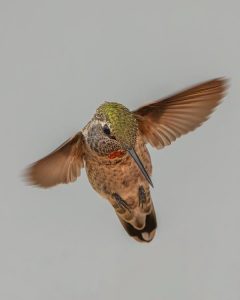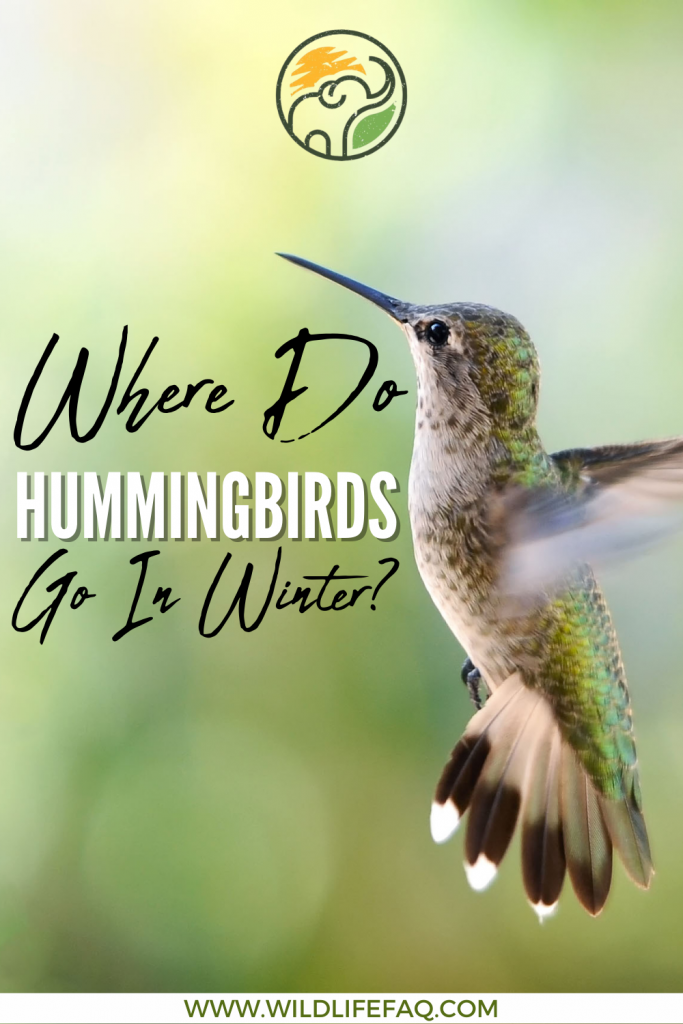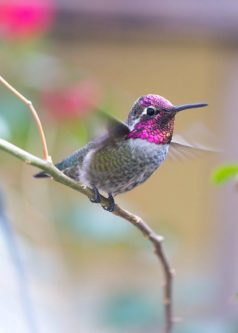Hummingbirds are migratory birds they spend their winter season in different places from where they nest. Hummingbirds are little, brightly colored birds that resemble bees.

The ruby-throated hummingbird, the most abundant hummingbird in eastern North America, claims a breeding range that extends from the Gulf Coast northward into Canada, and then migrates to the region for the winter from southern Mexico to Panama.
That is why you may not see many hummingbirds in your yard or garden after the fall season, but it is not impossible to view hummingbirds in the Southern United States throughout the winter months.
Some birds in warmer climates, such as those in the Southeast and West Coast, opt to remain in their current location rather than migrate towards the south.
Every winter, hummingbirds from the northern hemisphere migrate to the southern hemisphere, particularly the Caribbean, Mexico, and Central American countries. In order to cross the Gulf of Mexico, hummingbirds, for instance, can fly consistently for up to 5 hundred miles, from the sections of the coast across central Florida and southern Texas to the Yucatan Peninsula.
After a short period of leisure and recuperation, hummingbirds begin their return journey northward to their breeding grounds, covering around 20 miles per day and arriving in the northern United States and southern Canada by late May.
Do Hummingbirds Migrate in Groups?
No, they don’t like flying in groups. The fact that hummingbirds do not reside in groups is the nicest aspect. Even better, they manage to complete the full migratory process on their own, travelling to the south and then returning to their natural habitats.
That’s the reason, you are less likely to observe hummingbirds in your area during the winter seasons. However, certain hummingbirds, such as the Anna’s Hummingbird, choose to stay in warmer conditions around the southeast and west coasts, and they do not migrate much farther south.
Why Do Hummingbirds Leave In The Winter?
Due to harsh and favorable conditions hummingbirds migrate toward a favorable environment. In reality, hummingbirds are carnivores, and as a result, they rely heavily on insects for their food.
However, they only consume nectar as a source of energy to sustain their fly-catching activity, which is the greatest activity of any endothermic species on the planet.
However, when winter arrives and the days become cold and icy, they are unable to obtain sufficient insects and nectar-bearing blooming plants in this subfreezing environment.
What To Know About Basics of Hummingbird Migration?
During the winter months, hummingbirds will go as far south as Mexico in search of insects, flowers, insects, and other natural food sources. Many of them begin their journey during the late summer and fall months.
When it appears that winter will be over, they return to the north (to their nesting areas in Canada and the United States), where they will find sufficient food sources once more.
Do Hummingbirds Hibernate?
This is the strangest misconception regarding hummingbird migrations since they don’t truly hibernate, but rather go into torpor mode, which is a state of suspended animation.
Torpor is something you are already familiar with. Overnight semi-hibernation that lowers heart rate, body temperature up to 50 degrees, respiration, and metabolism in accordance with the body’s need for rest and recuperation.
Hummingbirds use the torpor phase to preserve energy during a chilly night so that they can undertake a journey the next morning.
Where Do Hummingbirds Migrate To?
As has already been discussed, hummingbirds are migratory birds. Due to different environmental conditions, few hummingbirds are seen in northern regions, and many more are found in southern regions.
- Some species of hummingbirds never migrate, even in harsh environments.
- Migratory hummingbirds migrate towards Mexico and Central America.
- Their breeding grounds are in the northern and western parts of the United States.
- After their breeding seasons are completed in the summer, hummingbirds fly back towards Mexico and Central America.
Where Do Hummingbirds Sleep in Winter?
A birdfeeder can see hummingbirds most of the year, mostly during the summer and spring seasons, but these birds disappear as winter comes.

As we know, hummingbirds are famous for their active lives and aggressive nature, but what do they do when the extreme cold arrives?
Hummingbirds have the ability to survive with their active nature in medium-range temperatures, but as the temperature falls below 18 °C, these birds change their mode of living and become torpid.
This is the half-asleep condition or sleeping of hummingbirds during winter. “Torpor is a condition in which the body temperature and metabolic rate of an organism fall to as low a range as possible and the physicochemical activity of the organism becomes reduced.”
Hummingbirds have the highest metabolic rate in the bird community. To maintain this active life, hummingbirds need a large amount of food material.
Most of the hummingbird species feed on nectar and blossoms of flowers. Others, which require a high level of protein, feed on small insects and their larvae.
All kinds of food materials are easily available during the spring and summer seasons, but as the chilly season starts, the hummingbirds face a scarcity of food.
As the food availability becomes reduced, the hummingbirds change their living mode and start an energy conservation mode, becoming torpid.
These birds torpor on the twigs of higher trees and spend some time in their nests as they choose a location for torpor, which acts as an insulator and saves the birds from chilly winds. This adaptation of conserving energy during the harsh, chilly winters helps these birds survive in conditions when the food availability is close to zero. Some species of northern regions show migratory behavior as winter comes and the food availability is reduced in the local areas. These birds migrate towards the lower regions where the temperatures are bare and food is also available.
How Far South Do Hummingbirds Fly?
Hummingbirds have migratory behavior, and especially those that live in the southern regions of America. They migrate towards the northern grounds of Central America. Most of the migrations occur before the start of the winter season. Some of the hummingbird species also show a migration from the southern areas to the northern tropics as winter arrives in the south. The famous migratory species of hummingbirds are the buff bellied hummingbird, ruby throated hummingbird, black chinned hummingbird, and calliope hummingbird.
Do Pileated Woodpeckers Migrate to Warmer Climates in Winter?
Pileated woodpeckers tend to stay in their natural habitat throughout the year, including winter. They prefer to reside in deciduous and mixed forests, making these woodlands their reliable pileated woodpeckers winter habitat. These magnificent birds do not migrate to warmer climates during the colder months, as they endure the winter by foraging for food in tree trunks and creating cavities for shelter.
Are There Other Colors of Flamingos Besides Pink?
Flamingo colors in zoos vary beyond pink. While the iconic pink hue originated from their diet, some species naturally exhibit white, red, or orange plumage. Zoos worldwide house these captivating birds, showcasing their dazzling array of colors. Nature continues to amaze us with the diversity found among flamingos, captivating visitors with its vibrant palette.
3.1 How Much Distance Do Hummingbirds Cover Migrating?

The distance that is covered during a single migration is based on the purpose of the migration. Those migrations that are done for the purpose of mating and food may have a shorter distance as compared to those migrations done for the purpose of finding a suitable habitat during the harsh winters.
As different researchers have examined by displacement of body size ratio it is evaluated that the rufous hummingbirds cover the longest distance during the migration journey when it is compared to all other migratory bird species.
A young middle-aged rufous hummingbird has a weight of 3 pounds, but it has the ability to travel 3900 miles during a single side migration, which is mostly done from Alaska to Mexico during the summers.
The total distance which is covered during this migration is 40% more than the distance covered by a common migratory bird, the Arctic tern, which travels 11185 miles on a one way migration.
The path which is used by Rufous Hummingbirds during the migration is the Pacific Flyway, and the migration is mostly coordinated and time-managed on the basis of flower production starting in the north and as more food is available.
The other migratory species of the hummingbird also travel long distances in different directions, but the basic purposes of migration remain the same in all species of hummingbirds.
Those migrations which function for the purpose of food and mating are shorter as compared to those which are done for habitat search.

Keywords: hummingbirds, northern hemisphere, Gulf of Mexico, Torpor










